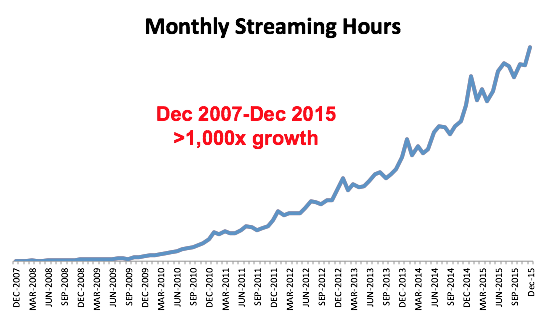Netflix recently pulled the plug on its last remaining datacenter, the culmination of seven years of diligent work to move its business to the cloud. Now the company's entire operation runs through Amazon Web Services (AWS), affording the streaming video giant the ability to scale as needed.
If you've paid attention to Netflix's subscriber numbers as of late, it's easy to see why such a move was necessary.

Yury Izrailevsky, vice president of Netflix's cloud and platform engineering division, said the company's journey to the cloud began in August 2008 when a major database corruption prevented them from shipping DVDs out to members for three days. Izrailevsky said they went with AWS because it provided them with the greatest scale and the broadest set of features and services.
Interestingly enough, most of the company's major systems (including all customer-facing services) were moved to the cloud before 2015. Just last month, Netflix moved over the remaining bits and now operates entirely via AWS.
Izrailevsky said supporting Netflix's growth over the past several years wouldn't have been possible with its own datacenters as they simply wouldn't have been able to rack the servers fast enough. With the elasticity of the cloud, the company can now deploy thousands of virtual servers and petabytes of storage within minutes.
Netflix expanded its reach to 130 additional countries last month, revealing that it now has more than 75 million subscribers worldwide. As of May 2015, the service accounted for a whopping 37 percent of all Internet traffic during peak hours in North America.
